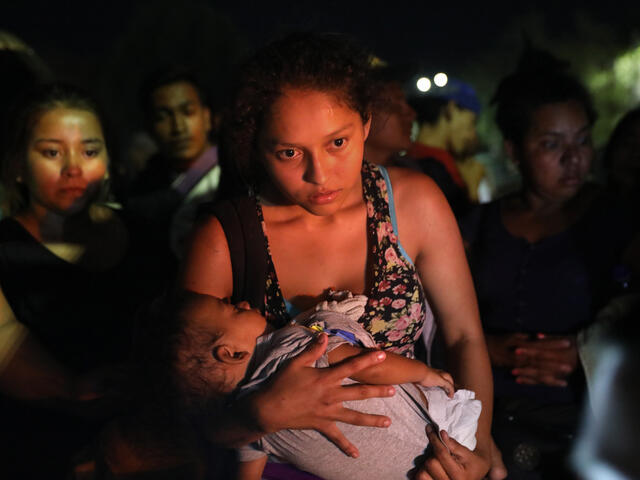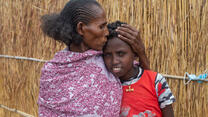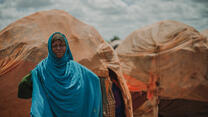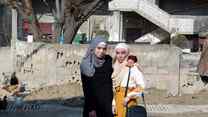Every day, people around the world make the difficult decision to leave their countries in search of safety and better lives.
Why?
There are over 120 million men, women and children around the world who have been forced to flee their homes. That number, which includes refugees, asylum seekers, and internally displaced persons (IDPs), has doubled in just ten years.
There are others who are looking for jobs or an education—they are usually called migrants—and people who want to live permanently in another country—immigrants.
Who is a refugee?
A refugee is someone who has been forced to flee his or her home because of war, violence or persecution, often without warning. They are unable to return home unless and until conditions in their native lands are safe for them again.
An official entity such as a government or the United Nations Refugee Agency determines whether a person seeking international protection meets the definition of a refugee, based on well-founded fear.
Those who obtain refugee status are given protections under international laws and conventions and lifesaving support from aid agencies, including the International Rescue Committee. Refugees in the U.S. also have the opportunity to become lawful permanent residents and eventually citizens.
Meet Salam Bunyan, who was forced to flee Iraq after receiving death threats from extremists.
Get updates on the Ukrainian refugee crisis.
Who is an asylum seeker?
An asylum seeker is someone who is also seeking international protection from dangers in his or her home country, but whose claim for refugee status hasn’t been determined legally. Asylum seekers must apply for protection in the country of destination—meaning they must arrive at or cross a border in order to apply. Asylum-seekers numbered 6.9 million, with a 26% rise in those waiting for asylum decisions by the end of 2023. The United States was the largest recipient of new individual asylum applications, followed by Germany. Most new applications came from nationals of Venezuela, Colombia, Syria, Sudan, and Afghanistan.
Then, they must be able to prove to authorities there that they meet the criteria to be covered by refugee protections. Not every asylum seeker will be recognized as a refugee.
Tens of thousands of children and families from Central America have fled extreme danger—murder, kidnapping, violence against women and forced recruitment by gangs. Those arriving at the U.S. border are being depicted as “illegal immigrants,” but in reality, crossing an international border for asylum is not illegal and an asylum seeker’s case must be heard, according to U.S. and international law.
"It doesn’t matter how you enter the country: If you’re in the U.S. or you arrive at a port of entry you can seek asylum. There’s no way to ask for a visa or any type of authorization in advance, you just have to show up," said the IRC's director of immigration Olga Byrne.
Get the facts on what’s happening at the U.S. border.
Who is an immigrant?
An immigrant is someone who makes a conscious decision to leave his or her home and move to a foreign country with the intention of settling there. Immigrants often go through a lengthy vetting process to immigrate to a new country. Many become lawful permanent residents and eventually citizens.
Immigrants research their destinations, explore employment opportunities, and study the language of the country where they plan to live. Most importantly, they are free to return home whenever they choose.
Learn about the IRC’s immigration work.

Who is a migrant?
A migrant is someone who is moving from place to place (within his or her country or across borders), usually for economic reasons such as seasonal work. Similar to immigrants, they were not forced to leave their native countries because of persecution or violence, but rather are seeking better opportunities.
Many of those crossing the U.S. border from Central American countries—El Salvador, Guatemala and Honduras—are in fact asylum seekers, not migrants. They have a well-founded fear of persecution if they were to return home.
Related: Refugee facts and statistics
What if you only had 5 minutes to pack?
Every minute conflict and disaster force 20 people to flee their homes, often with mere seconds to make impossible choices about what to bring with them on a journey of unknown length to an unknown destination.
These numbers tell a story of global upheaval, of people fleeing violence and climate disasters in search of safety and stability. To forge a path toward a more secure future for all, the world must address both the immediate needs of these displaced populations and the root causes driving such large-scale displacement.
How can I help?
Drought, conflict and disease rob children of the chance to live full, healthy lives. You can help: Give to the IRC.



